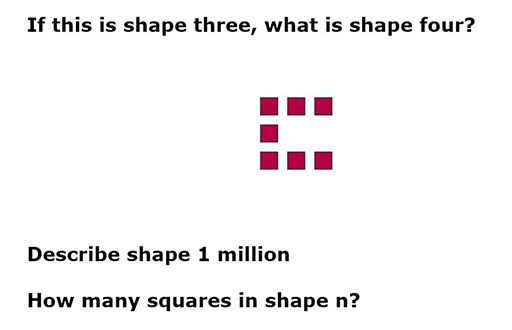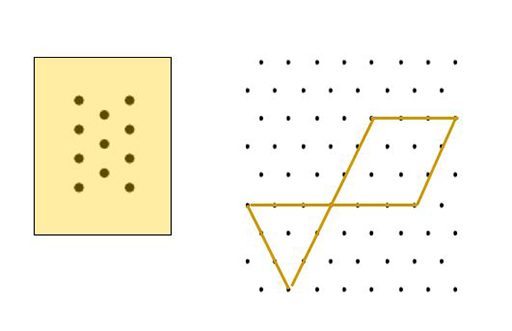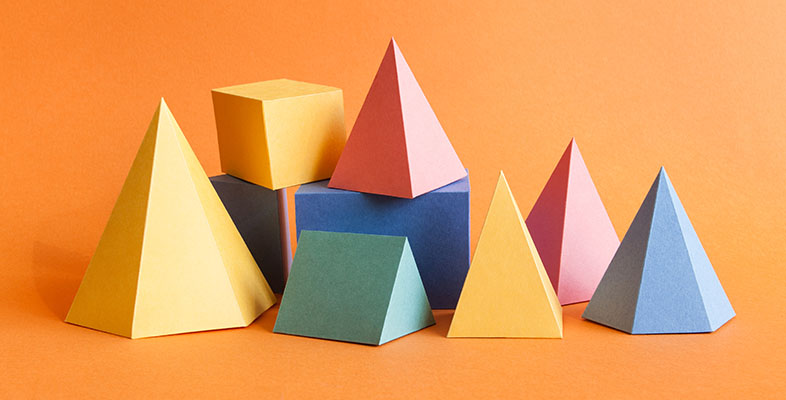2.4 Looking at structure in a sequence
We now return to the second main approach, where the focus is on looking for structure in a sequence. This is similar to looking at shape, rather than number, but it uses only one term from the sequence. A typical term is chosen – usually the third or the fourth, since the first term is often too simple to show the structure.
Activity _unit6.2.4 Activity 6 Looking for structure

An activity based on this approach will have two phases of exploration.
In the first short period, learners decide on their ‘shape four’. They can be supported by asking ‘Where do you see the “threes” in shape three?’. This phase ends with collecting several examples of ‘shape fours’, displaying them for comparison and asking ‘If this is shape four, do we know how to make shape five?’
For this problem, you might allow the class to divide into two groups: those who want to extend only the ‘arms’ of the C (so that the fourth shape has 9 squares) and those who have also extended its ‘spine’ (so it has 10). Either method can be justified but they lead to different expressions.
The task for the second phase is for pairs to explain in their books using a labelled diagram what ‘shape one million’ would look like, and find how many squares would be used for any shape.
Isometric dotty paper is a good resource for creating more patterns to practise this approach (Figure 10). Ask ‘If these are shape 3, what is shape 4?’

